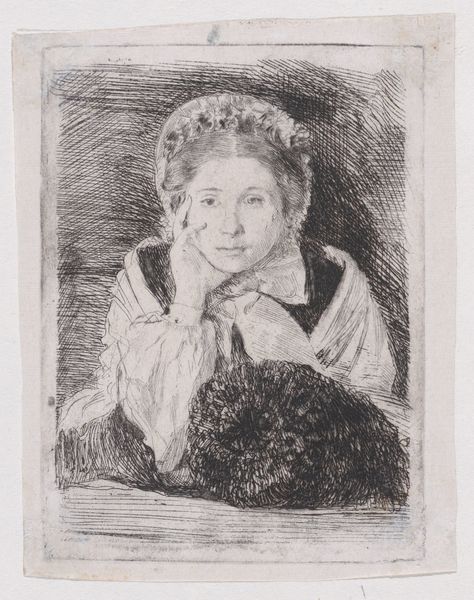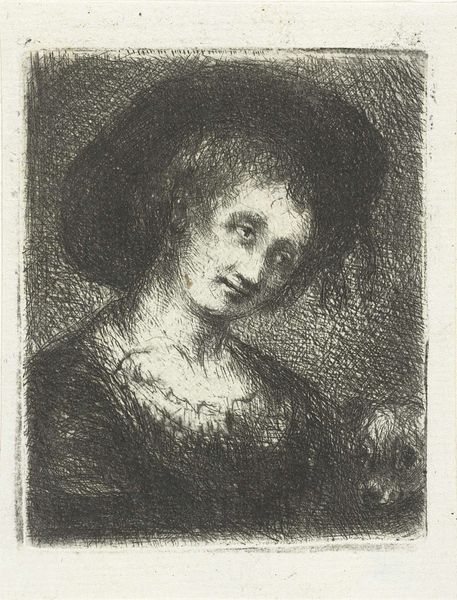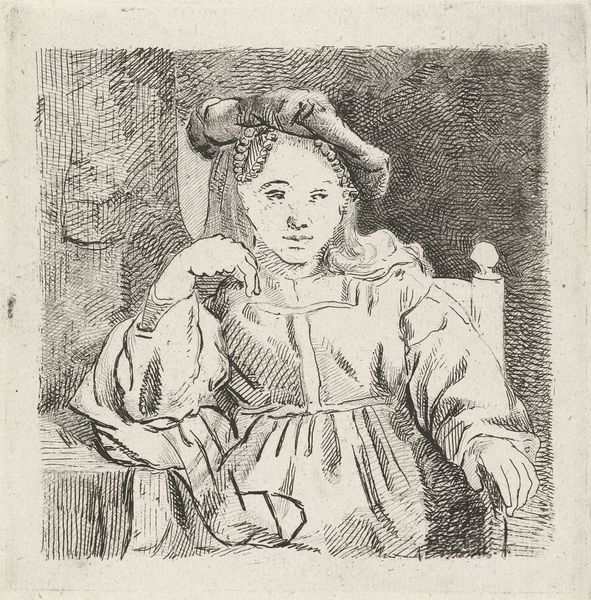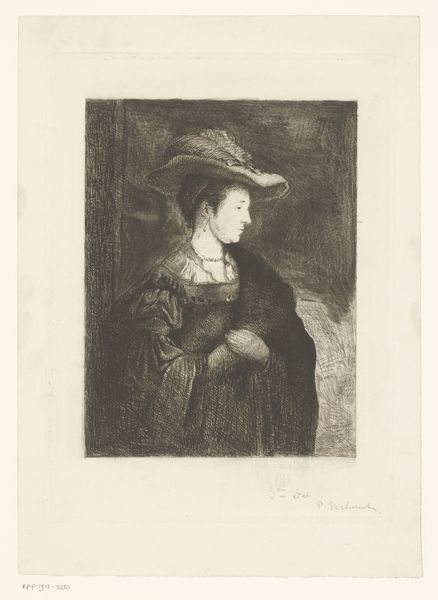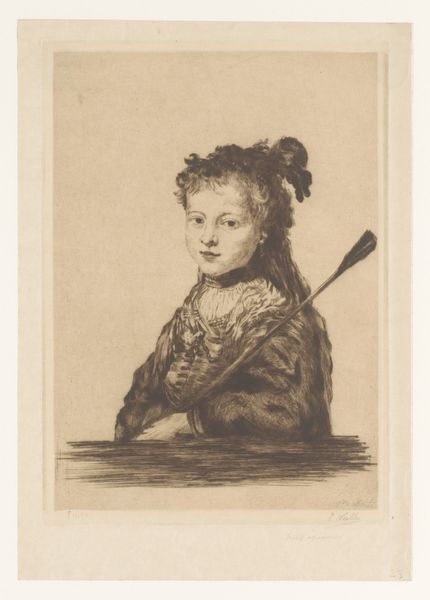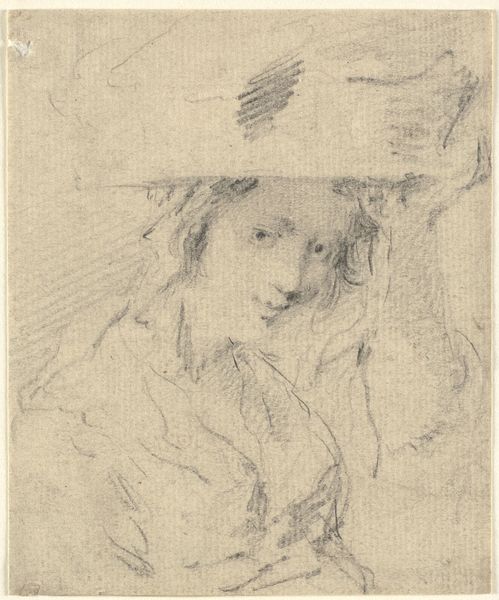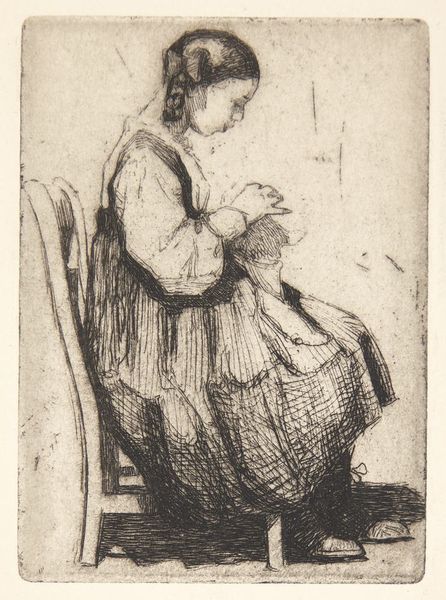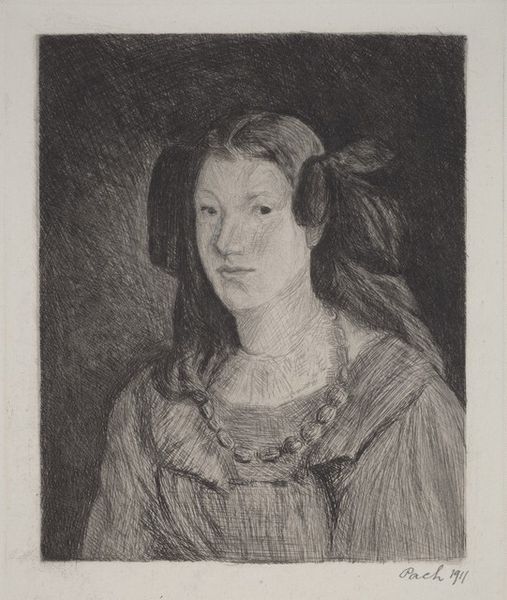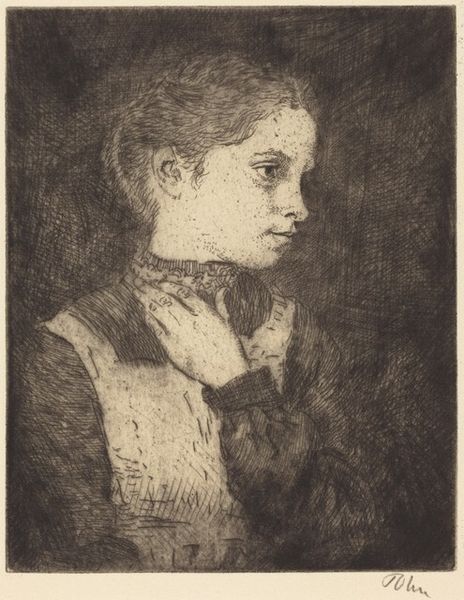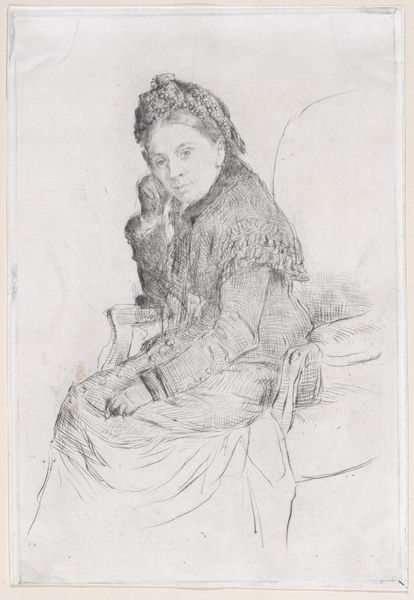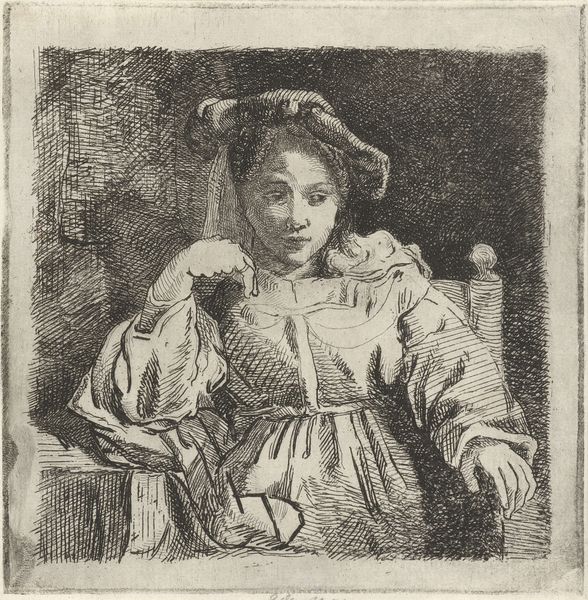
Marguerite De Gas, the Artist's Sister (Marguerite De Gas, soeur de l'artiste) 1860 - 1862
0:00
0:00
print, etching
#
portrait
# print
#
impressionism
#
etching
#
portrait drawing
#
realism
Dimensions: sheet: 13 x 10.5 cm (5 1/8 x 4 1/8 in.)
Copyright: National Gallery of Art: CC0 1.0
Curator: This etching by Edgar Degas, made between 1860 and 1862, is titled "Marguerite De Gas, the Artist's Sister." Editor: It has this very delicate, almost melancholic feel to it. She looks like she is caught between introspection and posing for the portrait. There is vulnerability in her gaze. Curator: Degas, although known to align himself to the Realist movement, also embraced printmaking innovations of his time, particularly etching. In a time when portraiture was becoming a popular means of publicly communicating family status, etchings became ways of capturing informal, intimate, almost snapshot-like images within the domestic sphere. Editor: I see that, yes. I'm struck by the use of the etching needle, creating a sense of unfinished spontaneity—it does feel very immediate, not at all stilted. What's also coming to my mind is the way the gaze of women have been framed throughout the art historical canon. And to see here the sister captured perhaps outside of public performance or life offers new lenses on gendered expectations. Curator: That reading speaks directly to debates about Realism and Impressionism as challenging earlier academic standards in state-sanctioned salons and institutions, and in doing so provided visual languages for personal and direct experience. Also of significance to note is the role Marguerite took in caring for Degas during his struggles with blindness in later life. It highlights the reciprocal relations in the familial unit and how we think about models and muses. Editor: Thinking about that exchange, it really makes you wonder about the politics inherent in the act of portraiture. It makes me think, how often are women’s roles shifted when art making, fame and access become tied to men's accomplishments, to brothers or lovers? It almost feels she is relegated to the role of prop in this intimate snapshot. Curator: It brings to the fore how we view labor within a familial dynamic. It challenges conventional narratives surrounding artist-model relations and reveals overlooked dimensions of care, kinship, and perhaps gendered power dynamics. Editor: Exactly. Seeing the print now knowing this, this artwork offers not only visual insight but a broader conversation about visibility, labor, and personal connection. Curator: Indeed. The personal stories enrich this etching and invite conversations about art, family, and lived experience beyond aesthetic preferences.
Comments
No comments
Be the first to comment and join the conversation on the ultimate creative platform.
